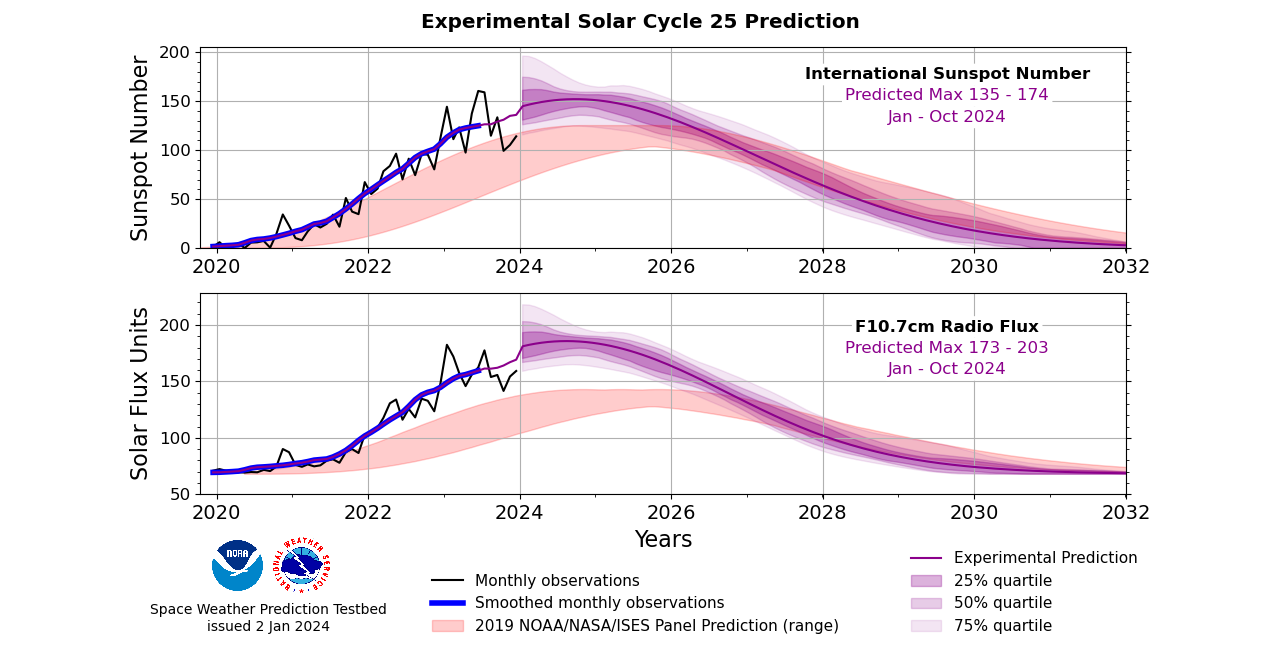Disaster: Solar Flares & Storms

Introduction:
In today's post, we delve into the dynamic phenomenon of solar flares and storms, exploring their nature and impact on our planet. While often overshadowed by more immediate natural disasters, the effects of solar activity are significant and far-reaching. This guide aims to demystify these cosmic events and highlight their relevance in our increasingly technology-dependent world.
Definition and Overview:
Solar flares are intense bursts of radiation emanating from the release of magnetic energy stored in the Sun’s atmosphere. These powerful outbursts, while originating millions of miles away, can have tangible effects on Earth, particularly on our technological systems. Accompanying these flares, solar storms or geomagnetic storms are disturbances in Earth's magnetosphere caused by a stream of charged particles ejected from the Sun. Understanding these phenomena is crucial, as they can disrupt satellite operations, communication systems, and even power grids.
Historical Examples:
The "Carrington Event" of 1859 stands as a stark reminder of the potential impact of solar activity. This geomagnetic storm, triggered by a colossal solar flare, wreaked havoc on the telegraph network, causing widespread communication disruptions. While technology has advanced significantly since then, our reliance on it makes understanding and preparing for similar events even more essential.
Parts of the World at Risk:
Solar flares and storms do not discriminate by geography, but their effects can be more pronounced near Earth's polar regions. These areas are particularly sensitive to fluctuations in Earth's magnetosphere, leading to visible manifestations like the auroras. According to earthsky.org, during the Carrington Event, "People saw auroras as far south as the Caribbean and Mexico. At some more northerly latitudes, it’s said the sky was so bright with auroras that birds, thinking it was morning, began to sing." However, in our interconnected world, the ripple effects of solar activity can be felt globally, impacting everything from GPS navigation to electrical grid stability.
When does it happen?
The sun undergoes an 11-year solar cycle, a periodic change marked by varying levels of solar activity. This cycle is most notably observed through the fluctuating number of sunspots - darker, cooler areas on the Sun's surface that come from intense magnetic activity. During the peak of the cycle, known as the solar maximum, the Sun is rife with these sunspots, leading to increased solar flares and coronal mass ejections. These phenomena release vast amounts of energy and particles into space, influencing space weather and impacting Earth’s magnetosphere, which can affect satellite operations and power grids on our planet. On the other hand, during the solar minimum, sunspot and solar flare activity decreases, leading to a quieter period in solar activity. Understanding this cycle is crucial, as it holds significant implications for space weather forecasting and our preparedness for potential solar-induced disruptions. The Carrington Event happened just prior to the peak of one of these 11-year cycles. Upcoming Solar Maximum events are forecast to occur in the following upcoming years, and tend to last for 1 to 2 years:
- January to October 2024
- 2036
- 2047
- 2058
- 2069
- 2070
Here's our current solar progression:

Impact on Infrastructure and Society:
Solar flares and storms, while originating far beyond Earth, have a tangible impact on our planet, particularly on our technological infrastructure. The most significant concern is the potential damage to power grids. A powerful geomagnetic storm can induce electrical currents in power lines, leading to transformer damage and long-term power outages. Additionally, satellite operations, crucial for communication and navigation systems, are at risk. GPS services, mobile phone networks, and even airline communications can experience disruptions. On a societal level, these disruptions can lead to economic losses, hinder emergency services, and affect daily activities that rely on electricity and communication networks.
How to Prepare:
Preparing for solar flares and storms primarily involves safeguarding our electrical and communication systems:
- Surge Protection: Install surge protectors in your home to protect electronic devices.
- Backup Power: Have backup power options like generators or battery packs.
- Emergency Kits: Create an emergency kit with essentials - flashlights, batteries, a first-aid kit, non-perishable food, and water.
- Stay Informed: Follow space weather forecasts and warnings from organizations like NOAA's Space Weather Prediction Center.
- Data Backup: Regularly back up important data and documents to secure cloud services or external hard drives.
Gear Recommendations:
For a Carrington-like event, which involves intense solar flares and geomagnetic storms potentially disrupting electrical grids and communication systems, it's essential to be prepared for extended power outages and communication breakdowns. Here is a list of recommended gear and supplies:
- Power-Related Equipment:
- Battery, Solar, or Hand-Crank Radio: To receive news and weather updates. 🛒
- Solar Chargers: For charging small devices like cell phones.
- Portable Generators: For backup power, with adequate fuel supply. 🛒
- Batteries: A good stock of various sizes for different devices. 🛒
- Surge Protectors: To protect electronics from power surges when electricity is restored. 🛒
- LED Flashlights and Lanterns: More efficient and longer-lasting than traditional flashlights.
- Communication Devices:
- Satellite Phone: As these may still function if cell networks are down. 🛒
- Two-Way Radios (Walkie-Talkies): For local communication, especially in areas without mobile network coverage. 🛒
- Emergency Communication Plan: Documented and shared with family members, including meeting points and contact details.
- Emergency Supplies:
- Personal Protection and Comfort:
- Warm Clothing and Blankets: In case of heating systems failing.
- Waterproof and Insulated Gear: Depending on your climate.
- Sleeping Bags or Warm Bedding: Especially important in colder climates.
- Home and Personal Safety:
- Entertainment and Mental Health:
- Books, Games, and Activities: To keep morale high and pass the time during extended power outages.
- Vehicle Preparedness:
- Full Gas Tank: Gas stations may be unable to pump gas during a blackout.
- Car Charger for Devices: To charge devices if your vehicle is operational. 🛒
- Vehicle Go Bag: Another precaution in case you cant get to the rest of your supplies.
Remember, the key is to be prepared for the possibility of being without electricity, heating/cooling, and traditional communication methods for an extended period. The focus should be on self-sufficiency and ensuring you have the necessary resources to maintain safety and comfort during such an event.
Acting During the Emergency:
- Minimize Use of Electrical Devices: To prevent damage, minimize the use of sensitive electrical devices.
- Stay Updated: Use battery-powered radios to stay informed about the situation and any instructions from authorities.
- Follow Safety Protocols: If you're using a generator, ensure it's properly ventilated to avoid carbon monoxide poisoning.
- Check on Neighbors: Ensure that vulnerable individuals in your community are safe and have the necessary resources.
Useful Resources and Links:
Stay informed about the latest developments in space weather research and forecasting:



